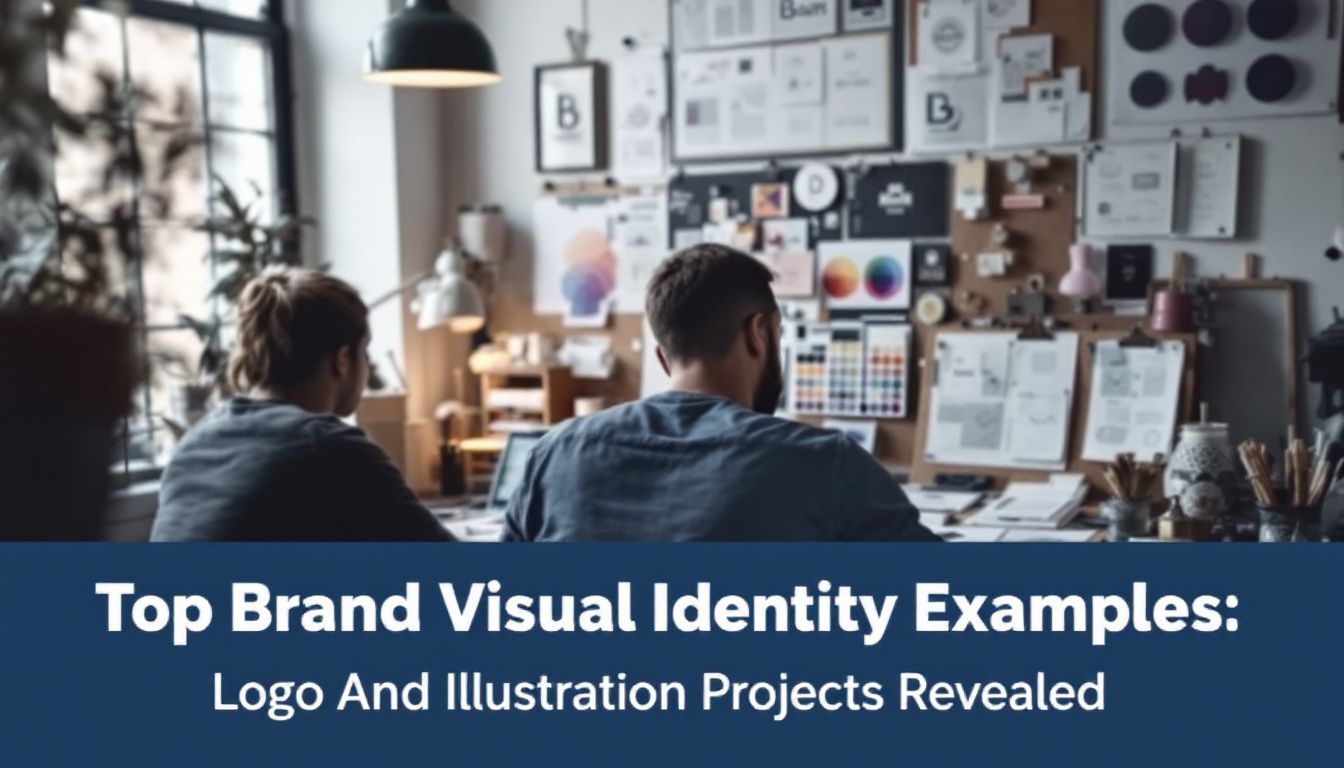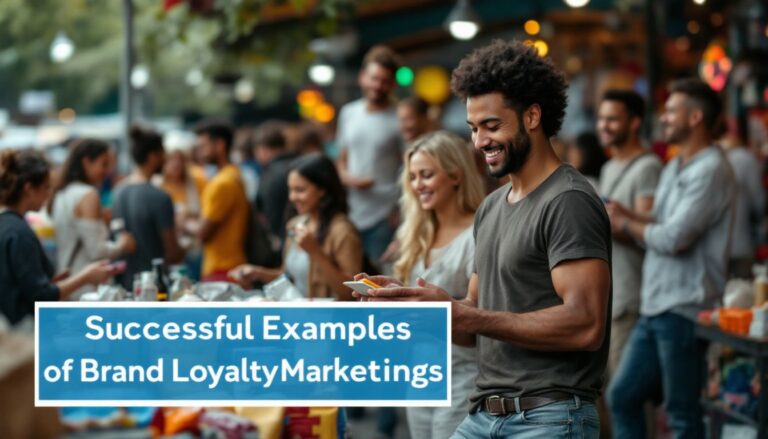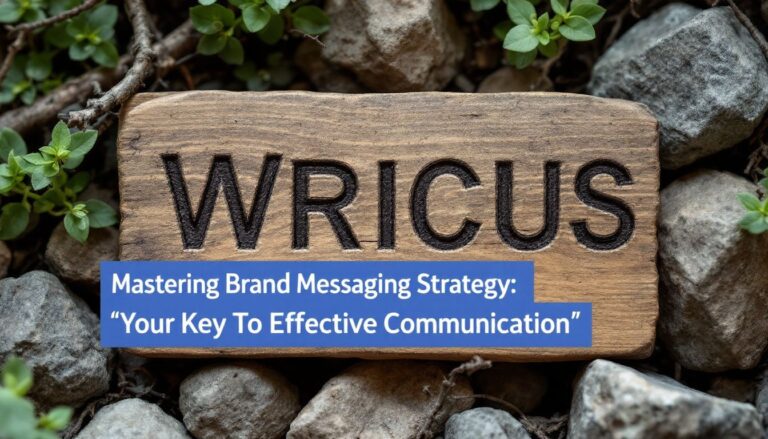Do you find it tough to create visual identities for your brand that grab attention and stick with your customers? You’re not alone. Studies show people form lasting impressions of your brand in just a few seconds.
Let’s take a look at some top Brand Visual Identity examples, breaking down logo design and illustration projects from well-known companies like Coca-Cola, Airbnb, Glossier, and Spotify.
You’ll see what makes these visuals stand out—and why they stay memorable.
Key Takeaways
- Great visual branding grabs attention fast—in seconds sometimes—like Coca-Cola’s bright red cans or Nike’s famous swoosh; you see these and just know.
- Visual identities use logos, colors, and fonts to quickly show people who you are—no words needed. Glossier goes with soft pink for a friendly vibe, while Patagonia’s mountain logo clearly shows their love for nature.
- Specific colors bring out certain feelings—red means energy and excitement, blue feels calm and dependable. Picking colors that match your brand’s personality matters—a lot.
- Airbnb’s “Belo” logo from 2017 expresses belonging. It cleverly looks like a person with arms raised, symbolizing people connecting and coming together.
- Spotify keeps visuals simple with green, black, and white colors. Their popular yearly “Spotify Wrapped” recap encourages users to share playlists and listening habits—building a sense of community through clever visual design.
The Essence of Brand Visual Identity

Brand visual identity is your company’s face—how people quickly spot you, even in a crowded market. Good visual identity combines logos, colors, and fonts, telling your story without a single word.
Think of Coca-Cola’s red cans, or Nike’s swoosh—instantly known brands! The strongest identities stir emotions too. Glossier’s soft pink makes them feel friendly, while Patagonia’s mountain logo clearly shows they care about nature.
Your visuals need to stand out, connecting with people who care about the same things you do.
Strong visuals help brands stick in people’s minds. Colors trigger feelings—red signals excitement, blue signals trust. Fonts can look playful or serious, changing how folks see you.
Airbnb’s simple symbol means “belonging”, perfect for what they offer. Consistency matters too, keeping your look steady everywhere. That steady look builds customer trust. Great visual identity goes beyond looking good—it clearly shows who you are, and what you value most.
Key Elements of a Strong Visual Identity
A strong visual identity needs a few key parts working together to make your brand shine. These parts create a clear picture of who you are for your customers and help them spot you right away.
Logo Design
I’ve seen logos lift—or sink—a brand instantly. Your logo is your brand’s first impression, the face everyone notices immediately. Bright colors, clear shapes—these stick in people’s minds.
Working closely with clients taught me one thing: regular, consistent logo use boosts recognition quickly. Look at Glossier—they nailed it with simple logos that speak directly to their audience.
Great logos tell stories without saying a word. Their colors and fonts clearly reflect what the brand represents. Using customer insights early on guides your logo design choices. That ensures your logo connects with the right audience.
Many freelancers overlook feedback—they create beautiful logos without meaning.
Color Palette and Typography
I choose colors that help your brand pop. A clear and consistent color choice creates trust, helps people recognize your brand right away, and makes them comfortable interacting with you.
Coca-Cola nails this—those timeless red and white colors stick in your memory for years. Font choice makes a big impact too. Coca-Cola’s flowing letters say they’re classic, friendly, and approachable.
Glossier takes a simpler route—soft pink and white shades paired with clean fonts to express freshness and openness. United Sodas goes bold, using bright colors and plain packaging to grab attention.
Jungalow adopts earthy greens and cozy golds to attract nature enthusiasts. These visual choices don’t happen by accident—they directly connect companies with the exact audience they’re after.
Now let’s look at how illustrations and icons bring these visual stories to life.
Illustrations and Iconography
Illustrations and icons give brands a distinct, visual personality. I love how companies use custom artwork—stories told without saying a word. Take Glossier, for example; they use simple line drawings to match their minimalist beauty style.
Their soft pink and white colors make drawings seem friendly, casual, and personal. Spotify also nails visuals, using bright and quirky graphics to help users bond with music—in a playful, easy-going way.
These visual touches aren’t only for looks—they make brands instantly recognizable. McDonald’s nailed this years ago, with famous characters like Ronald McDonald and the Hamburglar, still memorable today.
Strong illustrations make brands feel real, approachable, and help them stand out in busy markets.
Inspiring Brand Visual Identity Examples
Let’s check out some amazing brand designs that will spark your creativity and show you what works in the real world – from Glossier’s clean style to Spotify’s bold colors, these examples will help you craft your own standout look!
Glossier
Glossier is a great example of minimalist branding done well. Started by Emily Weiss in 2010 from her beauty blog “Into The Gloss”, the brand quickly became popular for its soft pink-and-white color theme.
Glossier’s visual style is clean, bright, and fun—perfectly matching today’s buyers who prefer honest products. Their simple yet friendly packaging and logo make the brand easy to spot, even on crowded shelves.
But Glossier goes further than nice visuals. They avoid artificial ingredients and care about sustainability. You can see their brand style on fun lifestyle products too, including hoodies, mugs, and cookie cutters.
This consistent design helps customers easily recognize Glossier products anywhere. Many brands try to copy Glossier’s minimalist touch—but no one quite gets it right.
Airbnb
I really like how Airbnb built a brand that feels like home. Back in 2017, they did a rebrand around the idea of belonging, using a simple logo called Belo. It looks like a person holding their arms up—which fits nicely with their whole concept of bringing people together.
Plus, they didn’t just create it alone—they asked their users what they thought, and then used their ideas to make everything friendlier and more authentic.
The bright red color catches the eye, and the clean layout makes booking super easy. Airbnb’s visuals clearly show what’s important to them—making sure everyone feels welcome. Their branding works so well because it matches exactly what they offer.
One thing I really appreciate: they use real home photos, not those staged, fake-feeling pictures, so the whole experience feels genuine and relatable.
Coca-Cola
Coca-Cola is one of the most famous brands ever. Its simple red and yellow colors—instantly familiar everywhere. What I like best is how Coca-Cola connects the product to happiness through clever marketing.
Even their logo, with those friendly, classic script letters, helps the brand feel warm and inviting. They’ve kept visuals steady over the years, earning customer trust globally.
The Coca-Cola brand is bigger than soda—it influences culture too. For example, their ads helped shape the popular image of Santa Claus, making him jolly, friendly, and comforting.
Successful campaigns like “Share A Coke” or “Open Happiness” clearly show their goal—to deliver enjoyment and refreshment to everyone. A clear, steady visual style lets Coca-Cola easily reach people from many countries and cultures.
It looks classic, but stays fresh and modern at the same time.
Spotify
I really like how Spotify creates its branding. Just green, black, and white—simple but powerful. The green they use is unique, bright enough for album covers to stand out clearly.
Even their logo feels friendly—it’s a bit tilted, like sound waves with character.
Spotify sticks to the same look everywhere—phones, desktops, tablets—which makes switching devices seamless. Their “Spotify Wrapped” feature is just brilliant. People love to share their top artists, favorite songs, and listening minutes at the end of every year.
It gets everyone talking. All this helps listeners feel connected, like they’re part of a community.
The visuals are creative without getting too fancy—clean design, easy to understand, and very friendly. This makes them easy to trust, especially with all the other music apps out there.
Spotify simply does branding right.
How Do Brand Guidelines Influence Visual Identity and Logo Design?
Brand guidelines serve as a blueprint for creating a cohesive visual identity. By defining colors, fonts, and imagery, these guidelines ensure consistency across all platforms. For designers seeking brand style inspiration, adhering to these rules fosters a unified logo design that resonates with the target audience, enhancing brand recognition.
Conclusion
Great brand visuals grab attention—and tell stories instantly. Think about Glossier’s soft pink vibe, or Coca-Cola’s iconic bright red. These brands prove colors, logos, and images can come together to make something special.
Clever design moves help these businesses pop out from crowded markets. Your brand can shine, too—just pick colors, shapes, and a style your audience will love. Big-name brands give clear clues on how to build visuals that stay fresh and memorable.







